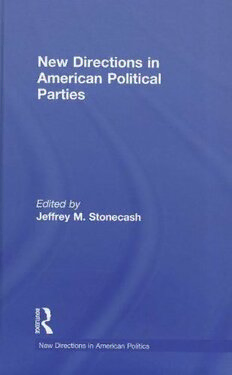
New Directions in American Political Parties (New Directions in American Politics) PDF
310 Pages·2010·6.021 MB·English
Most books are stored in the elastic cloud where traffic is expensive. For this reason, we have a limit on daily download.
Preview New Directions in American Political Parties (New Directions in American Politics)
Description:
Our portraits of voters, their relationship to parties, and the behavior of elected party members have changed significantly within the last 10 to 15 years. Characterizations of dealignment and decreased importance of parties have been fairly rapidly replaced by a focus on party polarization. Voters are becoming more ideological and the debate is now about the relative role of ideology, religious attachment, views on immigration, and class in affecting party identification and voting. In a short period of time we have gone from concern that parties are not responsive or sufficiently different to whether polarization has become too great. This volume, with contributions from some of the most noted scholars of political parties, brings together assessments of these changes to provide a comprehensive overview of current trends in the field. It serves as an excellent companion to courses on parties and elections, and a useful overview for scholars and students of American politics generally.
See more
The list of books you might like
Most books are stored in the elastic cloud where traffic is expensive. For this reason, we have a limit on daily download.
